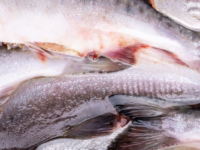 Looking for a new reason to cut down on “junk” food? Besides the obvious health-related benefits, I showed in a recent study that discretionary or junk foods make up a significant proportion of food-related environmental impacts.
Looking for a new reason to cut down on “junk” food? Besides the obvious health-related benefits, I showed in a recent study that discretionary or junk foods make up a significant proportion of food-related environmental impacts.
For an average Australian household, my research found that discretionary food contribute 33-39% of diet-related water use, energy use, greenhouse gas emissions and land use.
Why is this a problem? In a warming world with a growing population and dwindling resources, we can no longer afford discretionary consumption that harms both our own and the planet’s health.
Although the topic of sustainable diets is becoming more popular, the debate and proposed policies have not sufficiently questioned the proliferation of junk food products that use scarce resources to produce empty calories.
Sustainable and healthy
The global food system accounts for around 25 per cent of greenhouse gas emissions, 70 per cent of water use and 38 per cent of land use. We urgently need to meet climate targets and ensure food security. But it is increasingly recognised that making agriculture more efficient (to produce more food while using less resources) will not be enough. More sustainable diets are therefore essential.
National dietary guidelines are designed to help us eat more healthily. Recent iterations in Brazil, Sweden and the Netherlands also stress the importance of health and sustainability.
Animal-derived foods generally have bigger total environmental footprints than plant foods. This is because of the significant amounts of land, water and feed required by livestock and the methane released by ruminants.
Many recommendations to achieve healthy and sustainable diets have therefore justifiably focused on the need to reduce meat and animal-derived product consumption.
Diets such as the Mediterranean, rich in vegetables, fruit, legumes and whole grains, seem to achieve the right balance between health and sustainability. A key characteristic of the traditional Mediterranean diet is the limited amount of discretionary food.
Enter junk foods
The Australian Dietary Guidelines describe discretionary foods as: “foods and drinks not necessary to provide the nutrients the body needs, but that may add variety. Many of these are high in saturated fats, sugars, salt and/or alcohol.”
By contrast, non-discretionary foods are those belonging to the core food groups: fruit, vegetables, cereals, legumes, nuts and seeds, dairy and unprocessed meat.
We all know that discretionary foods are unhealthy, but how do different products compare in terms of environmental impact?
There is a serious absence of research quantifying the environmental impacts of these foods. We would expect that the more processing our food goes through, the greater its overall impact due to cumulative energy and other input requirements.
However, my research shows that it depends on a number of factors – an issue highlighted in other studies on the general environmental impacts of diets. Junk foods almost always use more energy, but land and water use vary between products. Work in this area is still evolving.
However, this variability should not get junk foods off the hook, especially given their contribution to obesity. The question becomes whether these foods are consumed in excess, or whether they have displaced core foods – as can be the case for poorer socioeconomic groups.
The average energy intake of most Australians is above that recommended for their age and activity levels. That means we have to eliminate excess energy consumption, and we could consider eating junk food as a form of food waste.
If less discretionary food is produced, this means either that more unprocessed ingredients are available in their more nutritious forms, or that less agricultural production is necessary. Both could reduce environmental impacts.
What can we do about it?
Well, it’s complicated. The solution should ultimately tackle the heart of the problem, which is why we over consume these foods in the first place.
Encouraging dietary shifts away from junk foods is challenging because of their cheapness, taste and convenience. Discretionary foods are also aggressively promoted to consumers due to their high profitability.
This last point epitomises what is fundamentally wrong with our food system, and why it’s not supporting health and sustainability in the way it should. While carefully selected food taxes and subsidies, in addition to better labelling and restrictions on junk food advertising, can help reduce their consumption, these consumer-oriented measures are only part of the solution.
Food producers should ultimately be held responsible for the proliferation of cheap discretionary food. We need to encourage divestment away from unhealthy, unsustainable products through regulation and public pressure, following the example of measures to address climate change.
As the developing world continues to transition towards more “Westernised” diets, food consumption patterns are likely to become even more environmentally intensive.
To feed more people sustainably we need to trim off the excess by not only reducing the consumption of animal products, but also by fighting over consumption of discretionary foods and the associated waste.
![]() Michalis Hadjikakou, Postdoctoral Research Associate in Environmental Sustainability, UNSW Australia. This article was originally published on The Conversation.
Michalis Hadjikakou, Postdoctoral Research Associate in Environmental Sustainability, UNSW Australia. This article was originally published on The Conversation.















